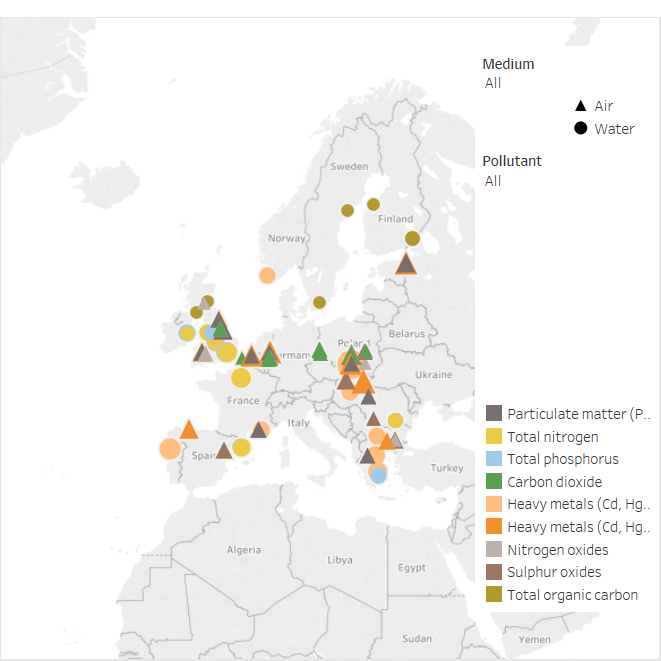The EEA briefing ‘Releases of pollutants to the environment from Europe’s industrial sector,’ analysed emissions data from largest industrial facilities including power plants, petrochemical refineries and metal processing plants which Member States have to report under European Union (EU) rules. The analysis is based on the latest available data for 2015 recently added to the EU’s European Pollutant Release and Transfer Register (E-PRTR). The register contains data reported annually covering 35 000 industrial facilities over 65 economic activities located across the EU, plus Iceland, Liechtenstein, Norway, Switzerland and Serbia.
Although good progress is being made by the EU towards its climate and energy policy objectives for 2020 and 2030, the briefing highlights that coal-fired power plants remain responsible for the largest releases of carbon dioxide (CO2), sulphur dioxide (SO2) and nitrogen oxides (NOx) to the environment. In 2015, Bełchatów (Poland) released the highest amounts for these three pollutants while Drax (United Kingdom), Jänschwalde (Germany) and Kozienice (Poland) were listed as top polluting facilities for each of these three pollutants. Of the 65 economic activities included in the E-PRTR, coal-fired power plants were responsible for Europe’s largest releases of SO2 and NOx and comprised all but one of the facilities releasing the most CO2.
Coal remains the most used fuel in large combustion plants — power plants, refineries or large chemical plants and steelworks — despite a decreasing amount being used over recent years. Still, these facilities have significantly improved their environmental performance over past years, releasing fewer emissions to air per energy unit consumed. Biomass use in combustion plants remains minor, but has increased threefold between 2004 and 2015.
According to the analysis, half of the facilities responsible for the largest releases of air and water pollution were located in the United Kingdom (14 facilities), Germany (7), France (5), and Poland (5).
Latest reported data also found that wastewater treatment plants were responsible for the highest amounts of total nitrogen, phosphorus and organic carbon released to water. The most polluting of these facilities were located in the United Kingdom, France and Spain.

Click here for full screen version
Source: The European Pollutant Release and Transfer Register (E-PRTR), Member States reporting under Article 7 of Regulation (EC) No 166/2006
Note: The size of symbols reflects the magnitude of pollutants. Italy did not meet the deadline for submitting E-PRTR data for 2015 and is not included.
Background
Under the E-PRTR, information is provided for each facility, concerning the amounts of pollutant releases to air, water and land as well as off-site transfers of waste and of pollutants in waste water from a list of 91 key pollutants, including heavy metals, pesticides, greenhouse gases, and dioxins. The register ensures more transparency and public participation in environmental decision making.
Document Actions
Share with others